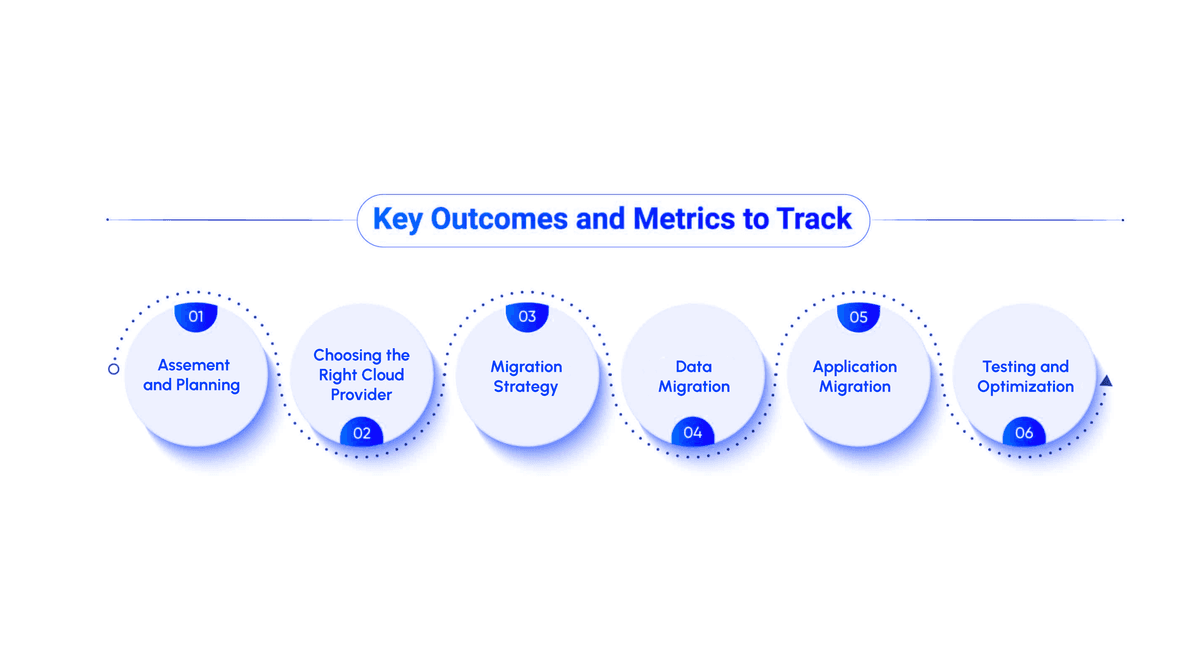Seamlessly Transitioning from On-Premises to the Cloud
Erjeta Shkodra
BLOG

In today's fast paced digital world, businesses are increasingly turning to cloud migration to modernize their IT infrastructure and stay competitive. Moving from on-premises systems to the cloud offers numerous benefits, including enhanced scalability, cost savings, and improved security. But what exactly is cloud migration, and how can organizations navigate this complex process successfully?
What is Cloud Migration?
Cloud migration is the process of moving data, applications, and other business elements from on-premises environments to the cloud. This shift enables organizations to leverage the advantages of cloud computing, such as scalability, flexibility, and advanced security. There are several types of cloud migration, including rehosting (lift and shift), replatforming, and refactoring, each with it's own set of considerations and benefits.
Benefits of Cloud Migration
Scalability and Flexibility: One of the most significant benefits of cloud migration is the ability to scale resources up or down based on demand. This flexibility ensures that businesses can efficiently manage their IT resources without overprovisioning or underutilizing their infrastructure.
Cost Savings: Moving to the cloud can lead to substantial cost savings. By eliminating the need for expensive hardware and shifting to a pay-as-you-go model, organizations can reduce capital expenditures and operational costs.
Enhanced Security: Cloud providers invest in security measures and offer advanced features such as encryption, identity and access management, and compliance certifications. This enhances the overall security posture of organizations migrating to the cloud.
Improved Performance and Reliability: Cloud services often provide superior performance and reliability compared to traditional on-premises systems. With global data centers and robust infrastructure, cloud providers ensure high availability and low latency for applications and data.
Business Continuity and Disaster Recovery: Cloud migration plays a crucial role in ensuring business continuity and disaster recovery. By leveraging the cloud for backup and recovery, businesses can quickly recover from disruptions and maintain operations.
Key Steps in Cloud Migration

Assessment and Planning: The first step in any cloud migration journey is a thorough assessment of the existing IT infrastructure. This includes identifying workloads, applications and data that need to be migrated, as well as evaluating current performance and security requirements. Based on this assessment, a detailed migration plan can be developed.
Choosing the Right Cloud Provider: Selecting the right cloud provider is critical to the success of a cloud migration project. Factors to consider include the provider's service offerings, pricing models, security features, and support options. Major cloud providers like AWS, Azure, and Google Cloud each have their strengths, so it's essential to choose one that aligns with your business needs.
Migration Strategy: There are several strategies for cloud migration, including lift and shift (rehosting), partial migration, and refactoring. The best strategy depends on the specific requirements and constraints of your organization. For instance, lift and shift is suitable for quick migrations with minimal changes, while refactoring involves modifying applications to fully leverage cloud-native features.
Data migration: Moving data to the cloud is a critical component of the migration process. This involves selecting the right tools and methods to transfer data securely and efficiently. Options include batch data migration, real-time data replication, and hybrid approaches that combine both.
Application Migration: Migrating applications to the cloud can be challenging, especially for legacy systems. Depending on the migration strategy, applications may need to be refactored, rehosted, or replatformed. It's essential to thoroughly test applications post-migration to ensure they function correctly in the new environment.
Testing and Optimization: After migrating data and applications, thorough testing is essential to ensure everything works as expected. This includes performance testing, security testing, and user acceptance testing. Continuous optimization is also necessary to improve performance and cost efficiency in the cloud.
Best Practices for a Successful Cloud Migration
Comprehensive Assessment: Conduct a thorough assessment for your IT environment to understand what needs to be migrated and identify any potential challenges.
Clear Migration Strategy: Develop a detailed migration strategy that outlines the steps, timelines, and responsibilities for the migration process.
Skilled Team: Assemble a team with the necessary skills and experience in cloud migration. This may include internal staff, consultants, or partners.
Continuous Monitoring and Optimization: Implement continuous monitoring and optimization practices to ensure your cloud migration environment remains cost-effective and performs well.
Security and Compliance: Maintain a strong focus on security and compliance throughout the migration process. Use best practices such as encryption, access controls, and regular audits.
Conclusion
Cloud migration is a transformative journey that offers numerous benefits, from cost savings and scalability to enhanced security and improved performance. By carefully planning and executing a cloud migration strategy, businesses can bridge the gab between on-premises and cloud environment, positioning themselves for future growth and success. If you're considering cloud migration, start with a comprehensive assessment, choose the right strategy and tools, and invest in continuous monitoring and optimization to ensure a smooth transition and long term success.
Call to Action!
Ready to migrate to the cloud but unsure where to start? Our expert team at CloudAstro specializes in seamless cloud migrations tailored to your business needs. We handle every step of the process, ensuring minimal disruption and maximum efficiency.
Why choose us?
Our experienced professionals have successfully migrated numerous business to the cloud.
We tailor our migration strategies to meet your specific requirements.
From planning and assessment to execution and optimization, we cover it all.
We prioritize your data security and compliance throughout the migration process.
Take your first step today and contact us!

